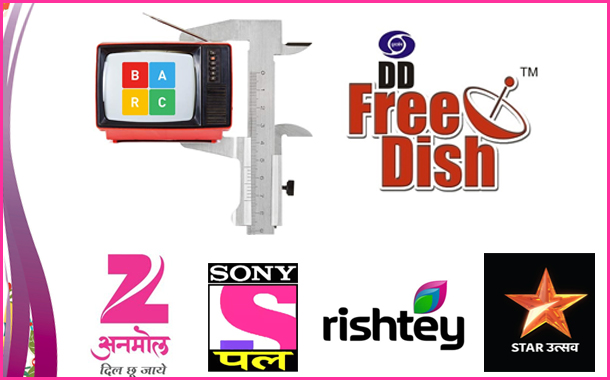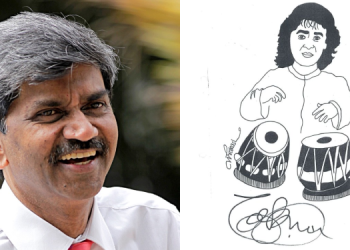The top positions in the rating charts of Hindi GEC market were out-of-bounds for secondary GEC channels like Star Utsav, Zee Anmol, Rishtey, Sony PAL until recent times. But, ever since the launch of BARC Rural data the Free-to-Air (FTA) Hindi GEC started dominating the total market scenario and similarly on the distribution front the untouchable DD FreeDish has emerged as the largest TV content distribution platform with its slots bidding rates surging up with the growing demand. here goes FTA growth story.
The Free TV market in India is poised to grow primarily due to the rise of DD Free Dish, which has now become the largest DTH operator in the country. Broadcasters have now opened up to the idea of providing many FTA offerings. This, in turn, has opened up avenues to advertisers who could not earlier afford the higher ad rates of mainstream GEC channels.
The availability of increased rural data now thanks to BARC, has provided greater visibility to broadcasters. The greater visibility on rural viewership has made the FTA option very attractive for leading Broadcasters and Hindi news channels, almost all of which are now FTA.
All large broadcasters, including Star, Zee, Sony, and Viacom, have launched their Free Dish-based channels. The content on these channels is similar to that on the broadcasters’ general entertainment pay channels but is dated by up to a year or even less. The success of channels such as Zee Anmol (with ad revenue of INR 80cr) and Sony Pal (with ad revenue of INR 110cr) has led to even further channel launches by broadcasters, which have now launched FTA lm channels on Free Dish as well.
Hindi news television, a segment always skewed toward FTA channels, has taken to DD Free Dish in a big way in order to protect its ad revenues and save on the carriage fees charged by distribution companies. Almost all large Hindi news channels are now on the DD Free Dish platform.
In the past, the lack of visibility on rural viewership data prompted both broadcasters and advertisers to focus on urban audiences. However, with rating agency BARC India now reporting rural viewership data, broadcasters have opened up to the idea of providing their content on FTA and pay channels, which cater to the rural segment.
According to EY report on India’s Free TV published in July’17, The increase in the number of FTA channels has led to a significant rise in viewership for genres such as Hindi GEC, Hindi movies and, primarily, the Hindi news genre, in which FTA channels command 81% of the total viewership. Channels in these genres were launched with the aim of expanding the reach of channels in non-urban and rural areas, as the rural measurement proportion of BARC was increased significantly to 50% of its panel size. Zee Anmol was launched with this objective and it currently has approximately 29m viewers.
Rural TV viewership contributes 52% to overall viewership. However, it is estimated to contribute 74% of the total viewership of DD Free Dish.
Brands today are striving to drive growth from rural markets. In fact, for mainstream FMCG companies, 35% to 40%10 of the sales are derived from rural areas. With BARC capturing rural data, the rural viewership is expected to grow and as a result advertising brands and agencies are expected to increase their focus on rural audiences.
DD Free Dish has emerged as a popular home for Hindi news channels. With increased visibility on rural viewership due to BARC, news channels are finding the subscription-free model more attractive. The 81% contribution of FTA channels to the total viewership in the Hindi news genre has prompted channels such as NDTV India to move to an ad-only model. These channels have forgone their subscription revenues with the target to offset that loss with a gain in ad revenues.
The unstable viewership of Zee News forced it to shift from a pay TV channel to an FTA model. This decision came with a goal to expand the channel’s reach and has resulted in a 30% hike in its ad rates.
With the base price set by the new tariff order at a maximum of INR130 plus tax for carriage of 100 channels, customers paying INR150 per month or below will now end up losing access to all pay channels they were receiving. In such an event, they would have the option to either pay more to receive pay channels of their choice or decide that free television would be a better option, given the quantum of quality content on it. Broadcasters’ FTA channel strategy may impact their subscription revenues in the event the move toward free television becomes significant.
Free Dish currently provides over 80 channels and is moving toward 250 channels, many of whom have the same or similar content than pay channels. In addition, recent regulations classifying even more sports events as those of national importance (hence requiring them to be shared with DD) make the Free Dish bouquet formidable competition to pay bouquets.
Going forward, Channels with low subscription share may be willing to forgo subscription revenue to increase reach and ad revenue.
Due to lower subscription revenues, the networks such as regional GEC, regional news and music, are likely to forego their subscription revenue in order to increase their reach, which can lead to an increase in ad revenues. However, Broadcasters such as kids and infotainment, may not move to an FTA model due to high dependence on subscription revenues but may launch alternate FTA offerings to capitalize on this new market.
According to the findings of EY Report, The state-run DTH provider, DD Free Dish, is the largest TV distribution Company in the country with over 20m subscribers. This is considerably more than national pay TV companies, which average 8m to 16m each. With over 80 channels currently, DD Free Dish plans to add 104 additional channels by 2017 and eventually reach 256 channels by 2020. The subscriber base of DD Free Dish is projected to reach 40m users in the next 2–3 years. The implementation of the Tariff Order of 2017 could further push the Free TV viewer base to 46m by 2020.
DD Free Dish provides free-to-air (FTA) channels, which allow users to watch content without paying a subscription fee. This also provides a cost-effective option to advertisers who target the middle/lower income audiences for their products.
With in-puts from EY FTA Reports
Also Read : As Aarambh fails to perform Star Plus dumps Baahubali Writer

















